
July, 2017: I visited Deplar Farm in the north of Iceland to fish the Fljotaa River at the request of my friends at Eleven Experience, who have built a first-rate lodge near its headwaters. The Fljotaa River is not far from the town of Siglufjordur in the north-central part of Iceland. Up until the 1950s, the river flowed freely through the valley floor, but a hydroelectric dam was built, which provided an unnatural halt to the salmon migration.
I spoke with Eleven’s Fishing Operations Manager, Elvar Fridriksson, about the river as we were rigging up my 9 foot 6 inch seven weight rod and he shared his perspective. The Fljotaa has been well cared for by the leaseholders and the local fishermen. It did not suffer any of the challenges that some rivers in Iceland have dealt with like excessive worming and harvesting. In fact, a fly fish only and a mandatory catch and release policy were implemented so that one can reasonably expect that the annual catch rate of 200 – 500 fish per season will remain steady or possibly tick upward. Salmon in the 20-pound range are taken every season, but the river average is lower than that in the very respectable eight-pound range. As Elvar and I were walking along the grassy banks toward the top of our beat, I did notice defined river channels that often lead to the slower tails of the pools. It just looked “fishy” to me and that there should be salmon holding in the water. However, with the river just opened for the season a few days prior, I was not expecting to see many salmon in the channels and deeper pools.
The Fljotaa is a rather short river – about nine kilometers long, but it does have a rather fast flow. The Fljotaa is not very wide and has many spots that you can cross to fish either bank making it accessible. The small stones in the bottom also make for relatively easy wading, but there are many times that you do not have to get in the water to cast to the hot spots in every beat.
On the first day, I drew Beat Three, which was the second-lowest beat on the river with Beat One being the closest to the hydroelectric dam. The river here was tight with some higher cliffs flanking the river bed. From atop the cliffs you could peer into the clear water below and look for salmon, but only if you crawled on your belly to the edge. This was to avoid creating a silhouette that might spook a salmon holding in the water below. We looked down and Elvar spotted a large salmon at the tail of the pool. We watched it hold and move around the pool. Then I was instructed to climb down to a safe spot and cast down the river and swing my fly to it. After several attempts. we did not catch the fish and left knowing that there was an early run of salmon in the Fljotaa.
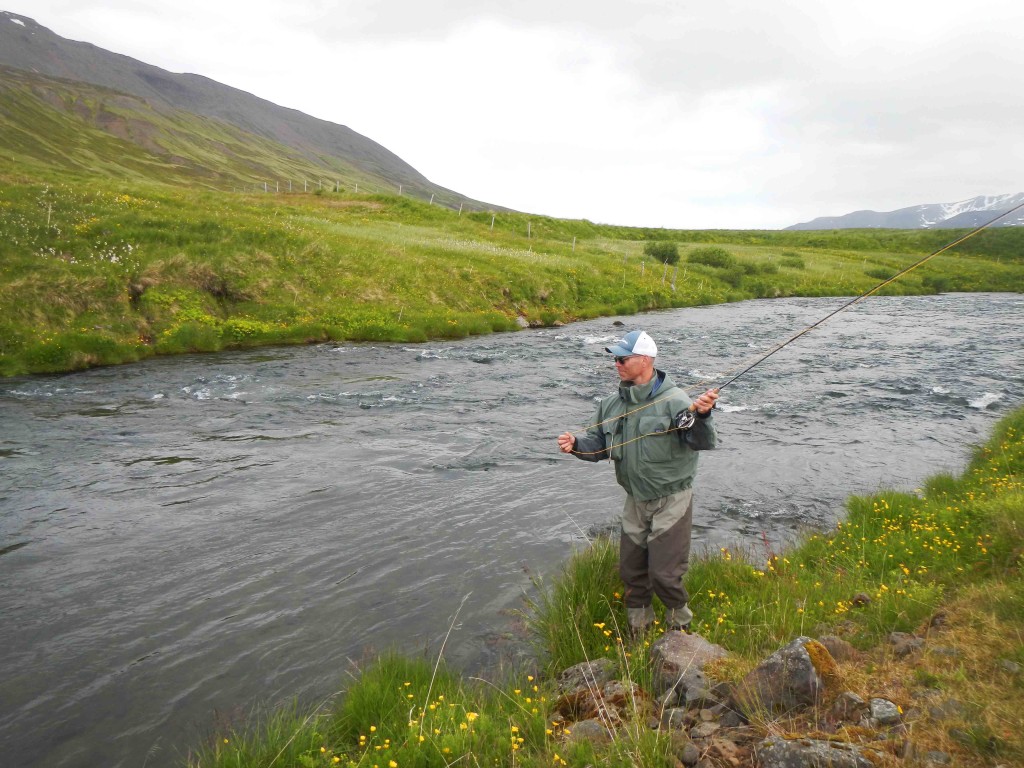
After lunch, I drew Beat Four – the lowest beat on the river, which I fished with my guide, Gulli. He lives in the area and has been fishing this river all his life. I loved hearing his stories of the Fljotaa and knowing that each bend, each riffle, run, pool, and even each rock, meant something to him. To him, guiding this river reminded him of stories of his father, grandfather, and fishing buddies who all would meet and fish the Fljotaa. Gulli would point out where the salmon would be in each pool or run based on his lifelong experience of fishing the river. But alas, the salmon were not where they should have been in the beat and we entertained ourselves by catching 20 Arctic char.
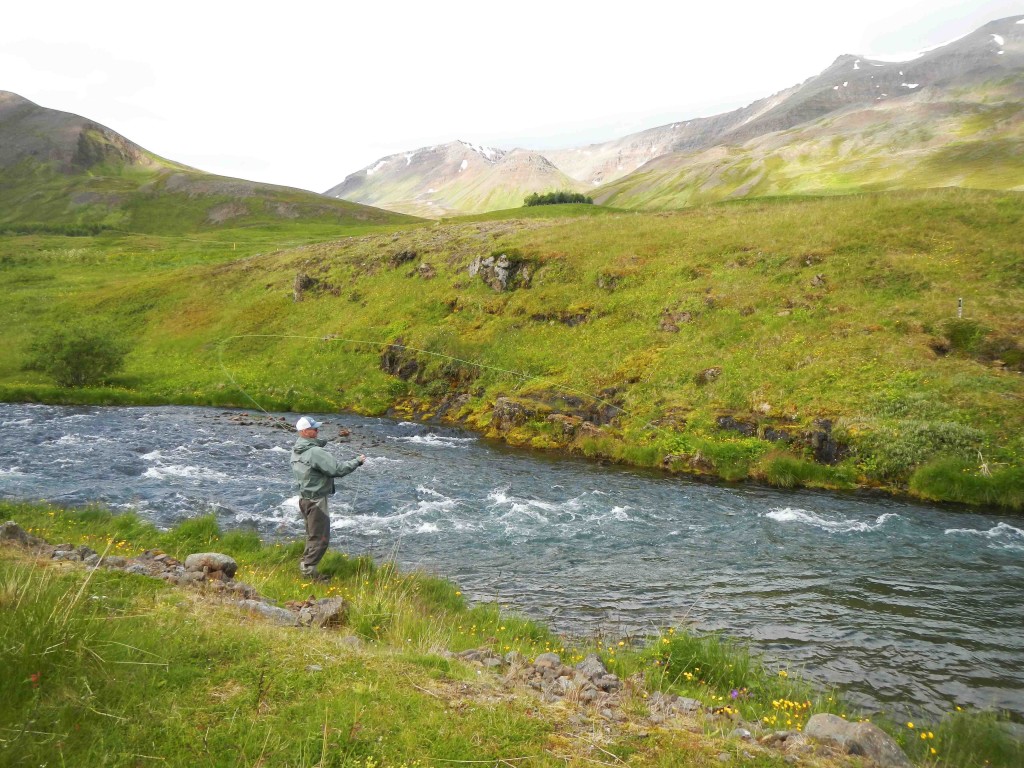
The following day, I fished Beat One in the morning. We drove to the dam and walked on the flat ground to a spot above where a small spring entered. I was amazed at how narrow the river was here and have fished much larger trout water. But here, where Gulli said there would be, I hooked my first salmon on the Fljotaa. The fish took a Red Francis from a cast of mine that could not have been more than 10 feet. The salmon hit on the swing and immediately the fight began. Gulli watched as I held the buck salmon in the current for what seemed like an eternity and when he entered the water with the net and was preparing to slip it in, the hook pulled out and I watched the silver slide down the run and disappear.
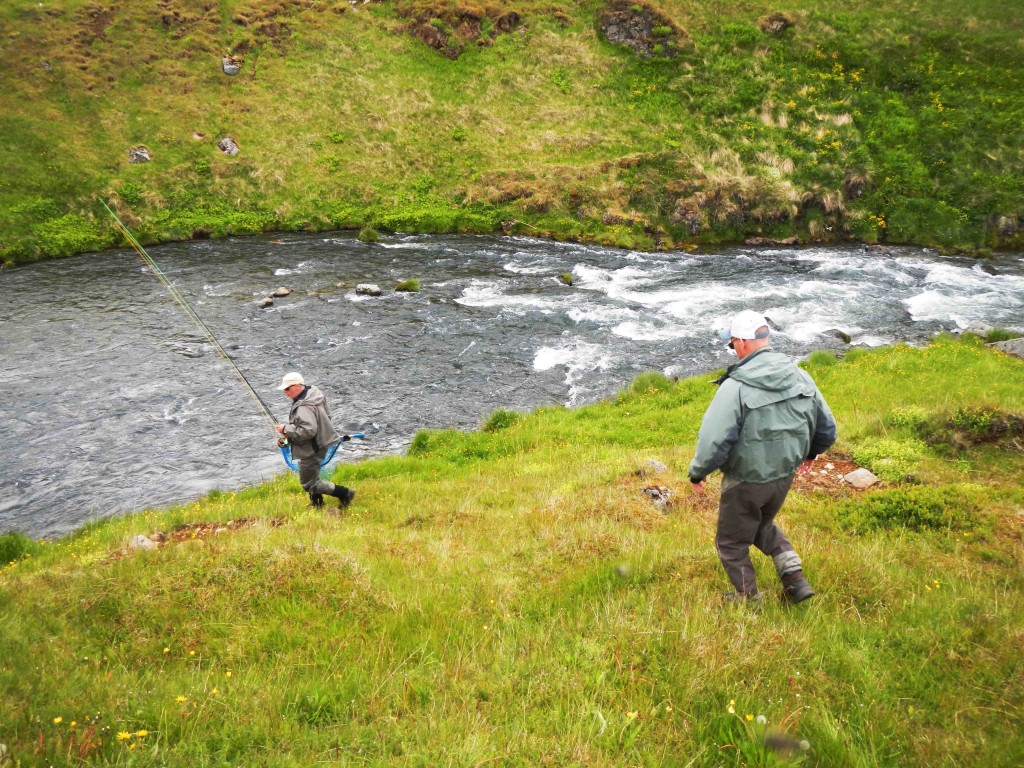
I would get another chance that afternoon on Beat Two when Elvar joined Gulli and me to fish an area where once again the river wound through an area of high grassy cliffs. We approached a rapid that slowed into a nice deep run that ended with a second set of rapids in the tail. Gulli called out where the salmon historically hold at this point in the river and told me a quick story that fisherman and fly line innovator, Jim Teeny had caught several salmon on this Beat several years ago. So before my first cast into the pool, I said, “Let’s do it for Jim Teeny then.” My line landed across the fast water in the head of the run and swung down and across to cover the deeper channel where Gulli knew a fish would be holding. A quick two taps immediately followed and I slowly lifted the rod. The salmon was hooked and for the next 30 minutes or so this fresh fish gave me everything it had. As it began to tire it slid down into the tail where the fast water began again. Suddenly it turned and went down the rapids. I ran along the bank with the rod held high while desperately trying to keep my line tight. I saw the salmon fall into a pot of swirling water and Gulli was able to jump into the river and net it there.
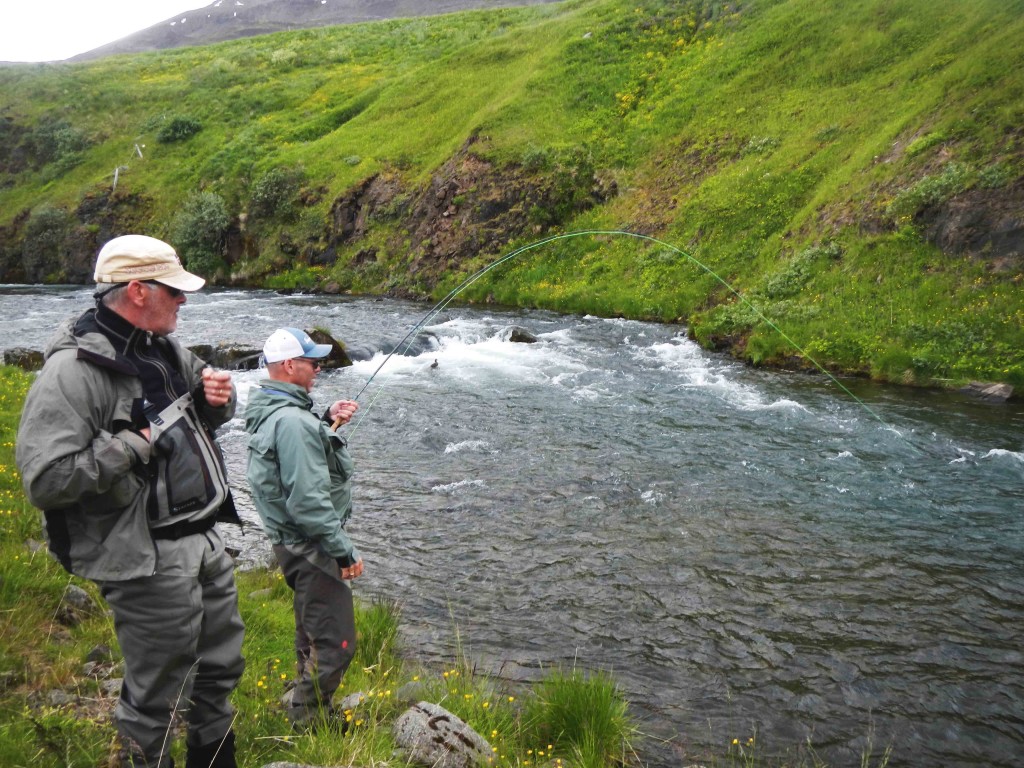
The fresh chrome-colored salmon was a new arrival to the Fljotaa and measured 88 centimeters with an estimated weight of 14 pounds. For me, it was an exciting fight with a strong and powerful foe. I took great satisfaction in watching this salmon revive and swim back up river into the same spot from which I hooked it.
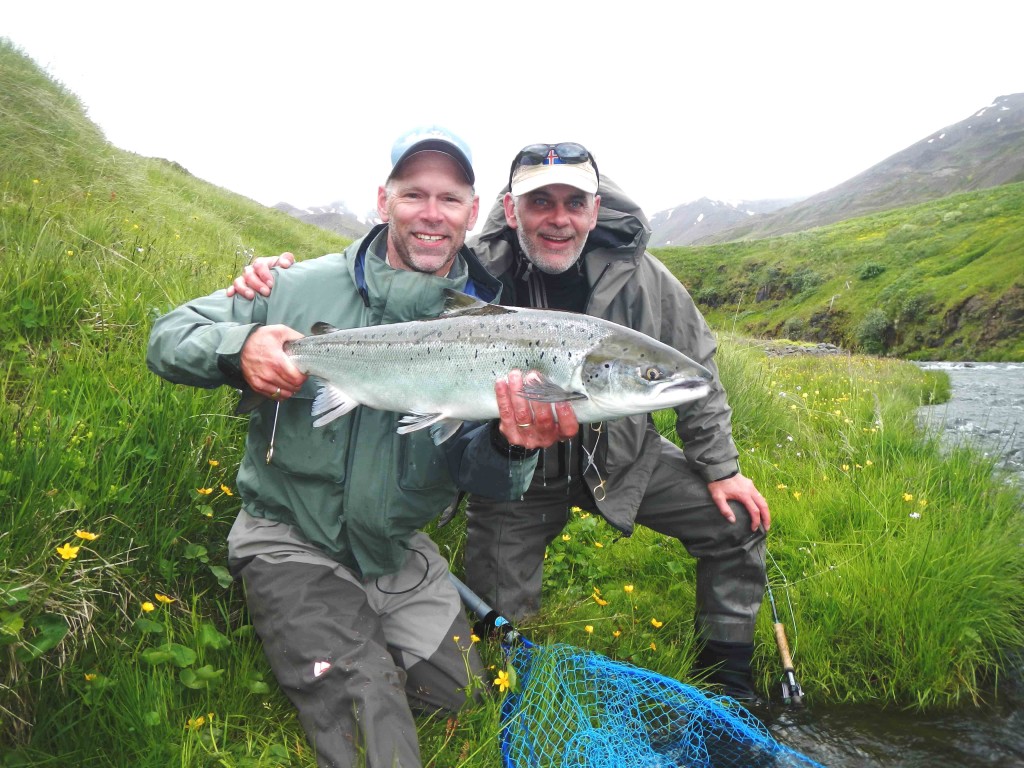
The Fljotaa River has some great days ahead of it. I feel that the salmon numbers should stay consistent and possibly increase with the new rules applied to protect the salmon. Char fishing is a bonus and can be a fun way to spend some time getting fish to the net. My days on the Fljotaa were just as memorable as my nights at Deplar Farm and I cannot wait to return.
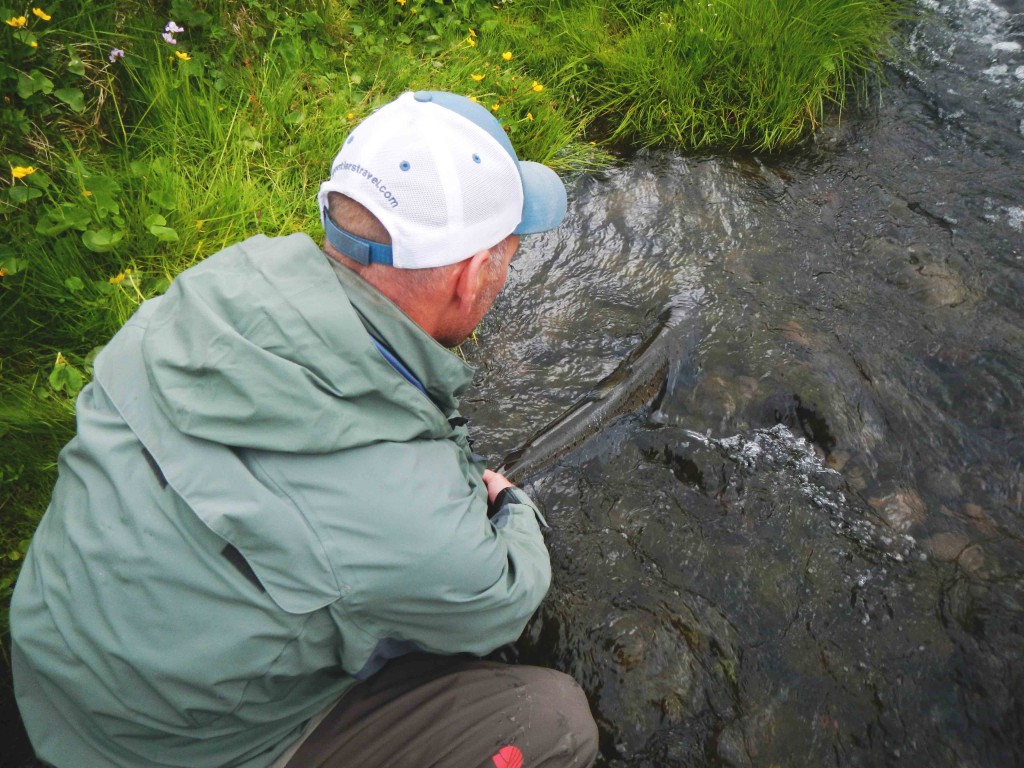
By: Ben Hoffman



